-
Title
Description
-
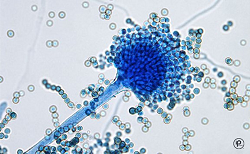
Diagnosed with asthma in her 30s, Julia White teaches yoga to people with asthma to help them control their symptoms.
“I was diagnosed with asthma in my thirties in early 2003. I’d been feeling unwell and struggling to breathe for a while, and could no longer do simple things like meet friends for lunch without getting symptoms. But when my GP said it was asthma my heart sank. I lost my younger sister,Claire to an asthma attack in 1994 so I was terrified about what it meant for me.
“After a bad asthma attack left me with a cracked rib in the summer of 2003, I decided to completely re-evaluate my life and get my asthma under control. I quit my fast-paced job as a wedding and events planner and started a yoga training course. I’ve always been active and tried yoga in the past, so this was an opportunity to learn more about the exercise and how I could use it to improve my asthma.”
Discovering the benefits
“It took several months after my diagnosis to get my asthma under control and feel myself again. I started using a preventer inhaler and monitored my peak flowregularly to keep on top of my symptoms, but practising yoga was a huge help.
“At first I would start panicking if I felt my chest tightening and my breathing becoming more difficult, but yoga brought a stillness and calm into my life – helping me to get control of my breathing and manage my asthma better.
“It’s now been 10 years since my last asthma attack. My breathing is better and I feel so much healthier. While I sometimes get symptoms when the pollen count is high or when it’s cold, I’m now at a point where I can confidently manage my asthma and stay calm if I notice my breathing is becoming difficult. And I always keep my reliever inhaler with me in case of emergencies.
“I aim to practise yoga every day as I know just five minutes of yogic breathing and three or four postures will make me feel more energised and relaxed. All I need to do is find a quiet space, roll out my yoga mat and let the movements and deep breathing techniques work my mind and body.”
-

A video developed as part of a student project at University of Manchester 2017 by Katie Holmes.
Katie questions why there is a lack of awareness about the dangers damp homes present to our health.
-
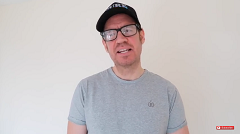
Friday 13th March 2015 was the day I got told I was going to die. Today makes 2 years since that day. Follow me on social media Twitter https://twitter.com/StewArmstrong Instagram https://www.instagram.com/stewarmstrong/ If you are new to my channel a bit about me. My name is Stewart Armstrong I have Sarcoidosis, Chronic Pulmonary Aspergillosis (CPA) and a very low CD4 count. I challenged myself to do a daily vlog for 30 days and liked it so much I carried on. I attend the National Aspergillosis centre which is at Wythenshawe Hospital Manchester. Leave a comment and let me know what you think.
-

The healthcare industry in America is so focused on pathology, surgery and pharmacology — on what doctors “do” to patients — that it often overlooks the values of the human beings it’s supposed to care for. Palliative care physician Timothy Ihrig explains the benefits of a different approach, one that fosters a patient’s overall quality of life and navigates serious illness from diagnosis to death with dignity and compassion.
-

If you think pollution is bad in London now, just take a look at what Londoners were forced to breathe into their lungs in the 1960s. And the researchers at the Medical Research Council had it even worse – they were guinea pigs of the day, exposed to soot in a closed room and then locked in a box and forced to pant.
-
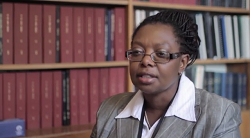
Nasilele describes her experience of living with CPA after a prior diagnosis of Tuberculosis and then having a severe cough that did not respond to antibiotics. A CTscan identified a fungal ball and she was treated with antifungal medication for 18 months. Nasilele was referred to the National Aspergillosis Centre, UK where a change in antifungal drug was recommended along with surgery to remove the part of the lung that contained the fungal ball.
The surgery has cured the fungal infection with a dramatic improvement in symptoms.
-
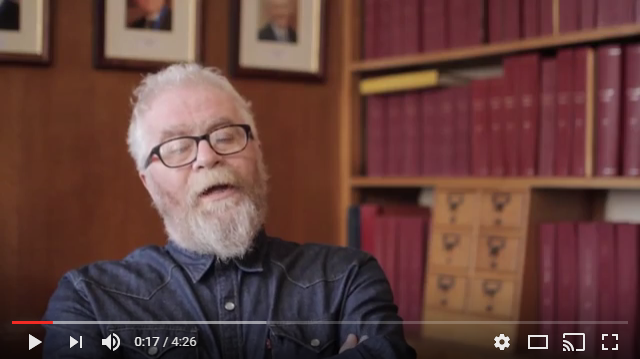
Stephen describes the difficulties living with Chronic Pulmonary Aspergillosis. He was initially suspected to have Tuberculosis but a year later he was finally referred to the National Aspergillosis Centre, UK.
Stephen decribes a strong improvement when on antifungal medication but continued to bleed from his lungs. Bleeding was reduced significantly using a procedure called embolisation.This talk was recorded at the GAFFI meeting in Liverpool in late 2016.
-
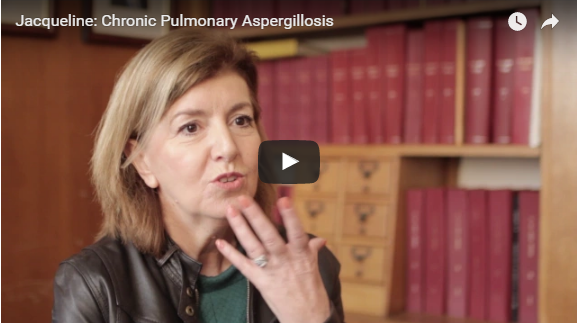
Jacqueline lives with Chronic Pulmonary Aspergillosis and this is her story, how she was diagnosed, how she was treated and her experiences while on several different antifungal drugs.
Short history: A series of chest infections that stubbornly refused to clear up led to investigation and treatment for Tuberculosis, but after starting to cough up blood Jacqueline was diagnosed with CPA at the National Aspergillosis Centre, UK.
The Global Action Fund for Fungal Infections (GAFFI) held a meeting in Liverpool in late 2016 and invited several people living with aspergillosis to tell their stories.
-
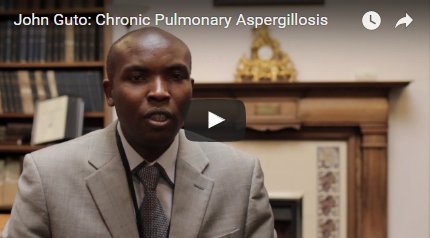
John Guto lives with Chronic Pulmonary Aspergillosis and this is his story.
The Global Action Fund for Fungal Infections (GAFFI www.gaffi.org) held a meeting in Liverpool in late 2016 and invited several people living with aspergillosis to tell their stories. -
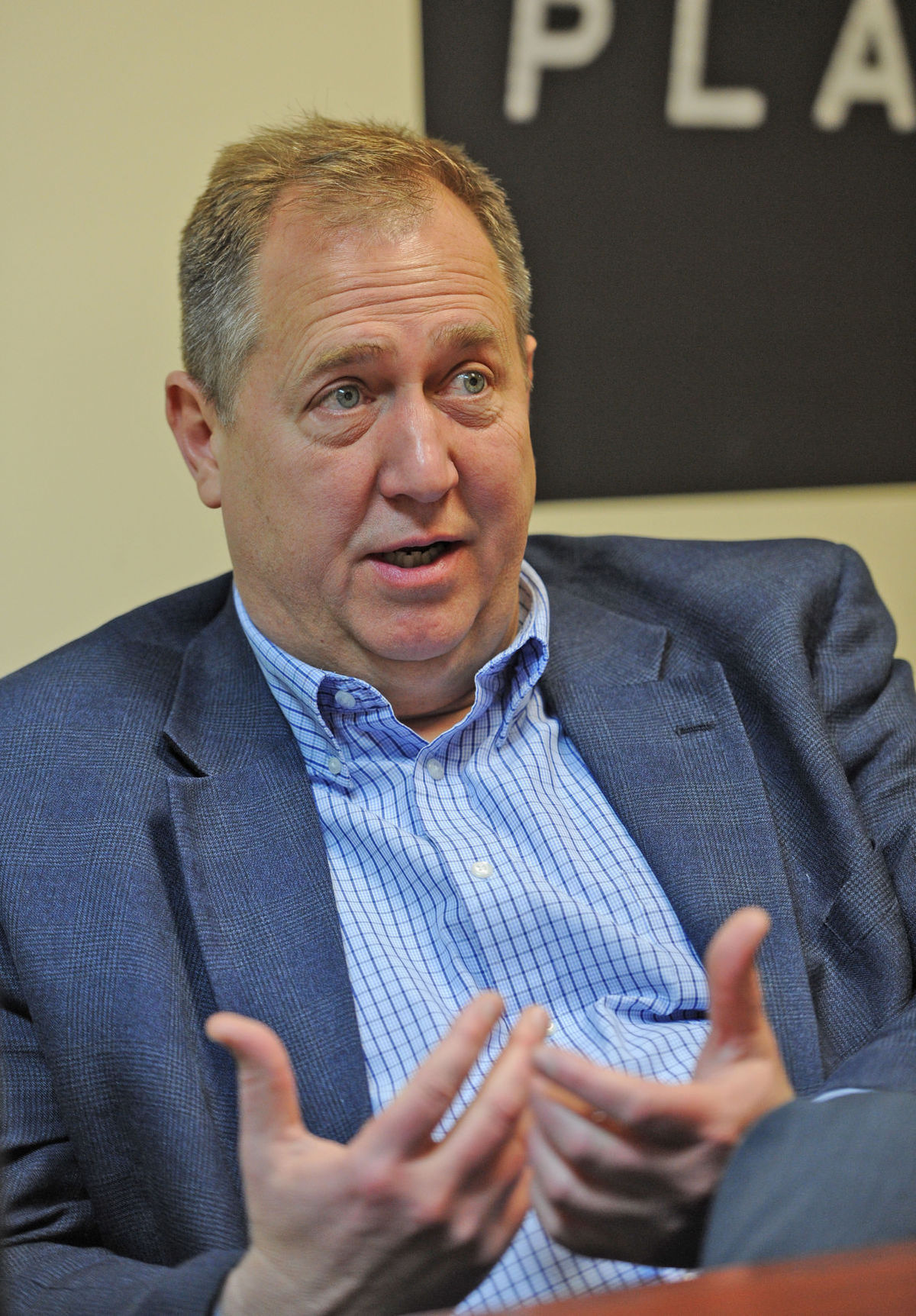
In January 2016, the CEO of NETWORKS Sullivan Partnership, the economic development organization that serves Bristol, Bluff City, Kingsport and Sullivan County, contracted a viral infection called aspergillosis that landed the 52-year-old in Holston Valley Medical Center. He was placed in a drug-induced coma.
The experience was a “gift” that gave him a deeper sense of love, family and community, Walker said.
“I don’t get sick often,” he said Monday from NETWORKS’ Kingsport office. “I don’t miss work. I literally never missed a day of high school. So when I woke up in the intensive care unit hooked up to a ventilator with my mom — who lives six hours away — sitting beside me, I was confused to say the least.”
Aspergillosis is caused by a type of mold that, when left untreated, is usually fatal, according to the Mayo Clinic’s website. Walker, who had been sick since August 2015, explained that his doctor wasn’t looking for the virus because it normally attacks those with weakened immune systems.
“An infectious disease specialist told me that I was really not even a candidate to get the virus,” Walker said. “It usually only affects people whose immune systems have been compromised in some way — people in poor health or certain types of cancer survivors. We’ll probably never know how I got it — but fortunately they knew how to cure it — which is the thing that I’m really thankful for.”
Walker said he had been working long hours before he started feeling ill, but because he was pretty healthy he chalked his symptoms up to simple fatigue. After a few weeks of not getting any better, he visited an urgent care, where he was treated for allergies. By the beginning of winter, he was still sick so he made an appointment with his doctor.
“By November, I was so sick it was a struggle for me to climb the steps to my loft,” he said. “And once I was inside I would fall out from exhaustion so I went back to the doctor. He’d treat me and I’d get better for a little while. Then I’d get sick again only I’d be worse than I had been before. By January, there were several nights that I could barely catch my breath. One night about 11 o’clock I called Brian [Ritz, NETWORKS program manager] and asked him to take me to the hospital because it was so bad.”
Ritz, who arrived within minutes, said there was no way to describe the way he felt when he got Walker’s call.
“I was extremely worried when he called me,” he explained. “But when I saw Clay I knew he was a pretty sick guy and needed medical attention quickly.”
Walker was emotional as he recalled that night’s events.
“Brian took one look at me and said he was going to call an ambulance,” he said. “When the EMTs put the oxygen mask on me it was like giving a man in the desert a drink of water. The doctors told me that call to 911 probably saved my life.”
The last thing he remembers that night was seeing the ceiling and the lights in the emergency room. He gave Ritz his wallet and phone and asked him to check on him the following morning.
“My next conscious experience was waking up with my mother sitting beside my bed. Seeing the confusion on my face — she asked me what day it was and I didn’t know. That’s when I found it was Thursday and I had been in an induced coma for six days.”
That’s when he began to realize what it meant to feel the prayers of others, he said.
“I hope that’s one thing I never forget,” he said. “I could feel the prayers that had been prayed. Feeling those prayers was as real as feeling this table in front of me. I wish I had the words to adequately describe it.”
Walker said the first two weeks after he “woke up” were spent in the hospital. When he was released, he faced two months of recovery at home.
“When I started feeling better, the first person I called was my son, Ty,” said Walker again holding back tears. “I was lying in the hospital with this gross, coughing up this gross black stuff. I was thinking that I didn’t care if I got better. Then I thought about my son — he’s going to turn 26 next month — and I thought, ‘he’s not ready to be without a dad.’ He’s the most important person in the world to me. Thinking about him is what got me through this.”
He added that there was an overwhelming outpouring of support for him and his family during his hospital stay and illness.
A fan of country star Tim McGraw, Walker said there are two songs that he listens to differently since his ordeal. One is called “If I die today” the other is “Live like you were dying.”
“One says I wonder who I’d see crying standing over me and who would just send their regard,” Walker said. “The other talks about being the kind of friend I’d like to be. So now I hug people and tell them I love them more often than not. I’ve learned that it’s stupid to not to tell people how you feel about them. I also found out that the people that I considered friends considered me as a friend as well. And that means a great deal.”
Walker applauded his staff for the work they did while he was recovering and called them an amazing team.
“I’ve been in economic development for 20 years and this has been the best professional year of my life,” he said.
Walker said it’s unlikely he’ll ever get the virus again but he’s taking better care of himself so he can fulfill his purpose while he’s still here.
“I’ve lost about 18 pounds and am continuing to lose,” he said. “I work out and have gotten my blood pressure down. It’s something I have to work at but it’s worth it. God allows things in your life. And when those things happen we’re supposed to do something with it.”
He smiled when he said he believes that his purpose is to be a dad to his son, make an impact on this community and people in his life.
“We’re not promised tomorrow or even the end of the day,” he said. “So, what are we going to do while we’re here? I think it has everything to do with helping people. That doesn’t have anything to do with your bank account or accolades. It has everything do with our relationship to others.”
